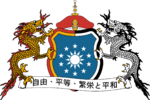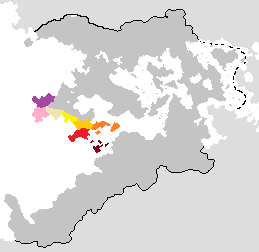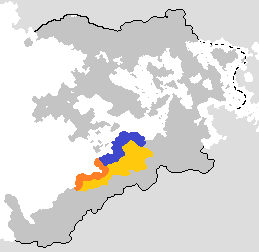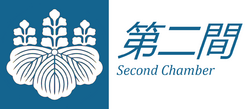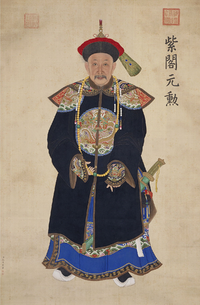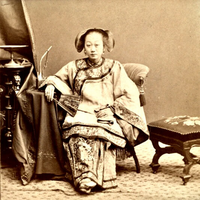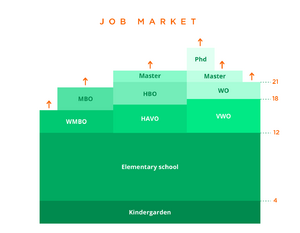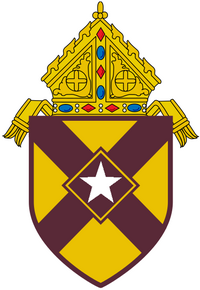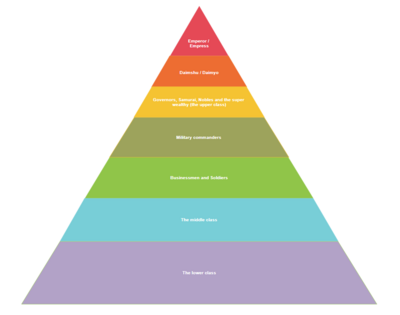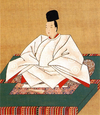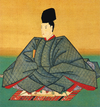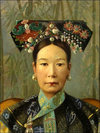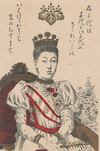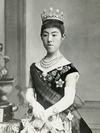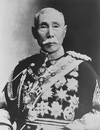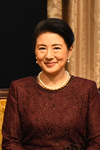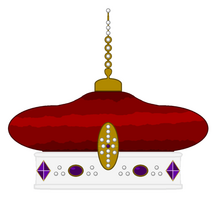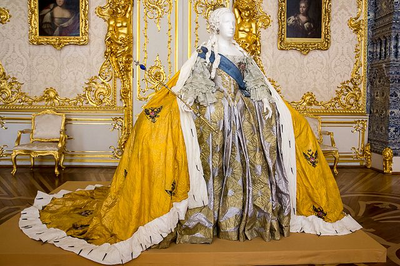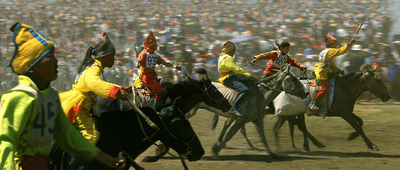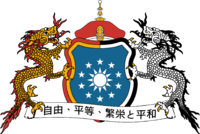Canton River Delta: Difference between revisions
(updated history + updated religion + updated Organized Crime) |
(Updated Religion) |
||
| Line 754: | Line 754: | ||
|float=left | |float=left | ||
|bars= | |bars= | ||
{{Bar percent|[[Kaȝin Christianity|Kaȝin | {{Bar percent|[[Kaȝin Christianity|Kaȝin Christianity]]|#597dff|2}} | ||
{{Bar percent|[[Kammism|Kammist]]|#ff8000|11}} | {{Bar percent|[[Kammism|Kammist]]|#ff8000|11}} | ||
{{Bar percent|[[wikipedia:Agnosticism|Agnosticism]]/[[wikipedia:Atheism|Atheism]]|#c5c5c5|10}} | {{Bar percent|[[wikipedia:Agnosticism|Agnosticism]]/[[wikipedia:Atheism|Atheism]]|#c5c5c5|10}} | ||
{{Bar percent|[[wikipedia:Catholic Church|Cantonese Catholic | {{Bar percent|[[wikipedia:Catholic Church|Cantonese Catholic Christianity]]|#ffce00|7.5}} | ||
{{Bar percent|[[wikipedia:Protestantism|Protestant | {{Bar percent|[[wikipedia:Protestantism|Protestant Christianity]]|#47c8c0|0.5}} | ||
{{Bar percent|[[Dōuism|Northern Dōuism]]|#db3bb4|25}} | {{Bar percent|[[Dōuism|Northern Dōuism]]|#db3bb4|25}} | ||
{{Bar percent|[[Dōuism|Southern Dōuism]]|#db433b|32}} | {{Bar percent|[[Dōuism|Southern Dōuism]]|#db433b|32}} | ||
{{Bar percent|[[Bujir Islam]]|#2c8d3d|8.5}} | {{Bar percent|[[Bujir Islam]]|#2c8d3d|8.5}} | ||
{{Bar percent|[[wikipedia:Hinduism| | {{Bar percent|[[wikipedia:Hinduism|Hinduism]]|#ace700|3.5}} | ||
{{Bar percent|Other religions|#f0abc0|5}} | {{Bar percent|Other religions|#f0abc0|5}} | ||
}} | }} | ||
| Line 788: | Line 788: | ||
====Dōuism==== | ====Dōuism==== | ||
Dōuism is the biggest religion in Canton River Delta but the religion is split between northern and southern Dōuism. The two parts both look and act similar but have some major differences. | [[Dōuism]] is the biggest religion in Canton River Delta but the religion is split between northern and southern Dōuism. The two parts both look and act similar but have some major differences. | ||
====Hinduism==== | ====Hinduism==== | ||
Revision as of 14:55, 19 July 2021
The United prefectures of Canton River Delta カントンリバーデルタの全県 (Gensa)
| |
|---|---|
| Motto: 自由、平等、繁栄と平和 "Freedom, equality, prosperity and peace" | |
| Anthem: "Xīn shídài de shǔguāng" ("Dawn of a new era") Royal anthem: "Eien no ōchō" ("The Eternal Dynasty") | |
Imperial Flag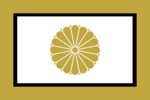 | |
 detailed map of Canton River Delta | |
| Capital and largest city | Canton |
| Official languages | Gensa, Yǔyán, Tukalo, Kanar, Sino-Gadorien |
| Recognised regional languages | Preimean |
| Demonym(s) | Cantonese |
| Government | Unitary parliamentary constitutional monarchy |
• Kōgō (Empress), Ten'nō (Emperor) | Kyasarin Sakuri |
• Daimshu (feminine word for President), Daimyo (masculine word for president) | Mei Wang |
| Legislature | The Blue parliament |
| First Chamber of Canton (White Chamber) | |
| Second Chamber of Canton (Yellow Chamer) | |
| Establishment | |
• Day of Uniting | 12 April 1621 |
• Modern boders | 5 September 1982 |
| Area | |
• Total | 1,317,248 km2 (508,592 sq mi) |
• Water (%) | wip |
| Population | |
• Estimate | 867,320,021 |
• 2020 census | 867,000,000 |
| GDP (nominal) | 2020 estimate |
• Total | TBA (wip) |
• Per capita | TBA |
| Gini (2015) | low |
| HDI (2020) | very high |
| Currency | Sekinar (-) (SKC) |
| Time zone | UTC-4 and -3 (MCT) |
| Date format | dd ˘ mm ˘ yyyy |
| Driving side | varying LHT/RHT |
| Calling code | +03 |
| Internet TLD | .CT |
Preceded by
← ← ← ← ← ← | |
Canton River Delta, officially called The United Prefectures of Canton River Delta, is a medium-to-large-sized country located on both the Thuadia and Thrismari continent. Bordering Great Golden Raj, Prei Meas, Qui Latine, Shimerland and Azureden. It consists of 54 unique prefectures, not including the autonomous regions of Kanar and Tôh Việt. Currently the Cantonese population embodies approximately 867 million citizens, and the nation has about 1.317.248km2 of territory, making Canton one of the closest populated region in Anteria. The country was formed in 1621, after centuries of continuous warfare between independent kingdoms. As a result of this tumultuous past Canton is up to date a severe pacifist country, vowing to only take on arms again when absolutely necessary. Canton is a significant member of the Sekidean Union's inner circle.
History
The history of Canton River Delta cannot be told all at once because of the many countries and cultures that were or are located within the borders of CRD.
List of wars involving Canton River Delta
History of Teiyama
Ancient history
Saisho no toshi
De geschiedenis in het gebied van de Teiyama begint met de eerste dorpen en steden, de Saisho no toshi. De belangrijkste steden in deze periode waren: Edo, Kibe, Fushan, Okiana, Shidō, Matsuyama, Kita, Toyishi, Takana and Ita. De steden hiervoor genoemt waren een bolwerk van de Teiyamanse cultuur. Deze periode kende vele oorlogen omdat er geen centrale staat was daarom waren alle steden aparte landen met aparte regeringen. uit deze periode komt ook de legende van de eerste Keizer: Ten'no Yi. De Saisho no toshi duurde van 950 BC tot 400 BC.
Totashi
Het opvolgende tijdperk kende integendeel tot de Totashi grotere staten die meerdere steden in hun bezit hadden. In deze periode kwam ook de omschakeling van brons naar ijzer, dit zorgde voor een verhoging in productiviteit van gereedschap en wapens. Dit zorgde er weer voor een verhoging in populatie in de steden waardoor men zich meer kon gaan specialiseren. De belangrijkste staten uit deze tijd waren: Kingdom of Edo, Kingdom of Sha, Kingdom of Wu and The Confederation of the Liá States. De staten van de Totashi periode waren machtig maar ook grote rivalen van elkaar die vaak met elkaar oorlog voerden en kleieren staten overnamen of onderdrukte. de grootste oorlog van deze tijd was de the War of ten winters waarin het Kingdom of Edo meerdere keren het Kingdom of Sha probeerde over te nemen en het was zelfs bijna gelijkt. In het negende jaar van de oorlog trok een groot leger van Edo richting de hoofdstad van Sha, de troepen moesten nog langs een vallei en dan waren ze bij de hoofdstad. Toen ze door de vallei heen liepen kwam er een hinderlaag van de Sha troepen. Er werd hevig gevochten maar de Edo troepen stonden geen kans en werden verslagen. Kingdom of Edo Probeerden hierna nog een keer Kingdom of Sha binnen te vallen maar ook die aanval mislukte. De Totashi duurde van 400 BC tot 190 AD
Kawa

De Kawa was verschillend van de andere periodes vanwege een simpel feit, toen was het Teiyama gebied onder een regering bestuurd voor de eerste keer. De Empire of Yima was de eerste staat die alle gebieden in handen had en daarmee de eerste regionale regering. De leiders van Empire of Yima beweerde dat zei afstammelingen waren van de mythische keizer Ten'no Yi en daarmee de wil van de goden achter hun hadden. Vele geloofde did verhaal en de afstammelingen van de leiders van Yima zitten nu nog steeds op de troon van Canton River Delta.
De Empire of Yima heeft vele goede dingen gedaan en vele dingen die moeilijk zijn te verklaren zoals het tempel complex van Tikawa. Dit complex is reusachtig en heeft bouwtechnieken in zich waarvan lang gedacht werd dat die veel later pas zijn bedacht. Een ander ding dat Yima heeft gedaan was de bouw van wegen door hun hele rijk en een centrale munt, dit zorgde voor een vergroting van handel in en uit het rijk.
History of Kanar
Ashar Kingdom
The Ashar Kingdom was one of the first kingdoms in the south. It was also the first nation to adopt Islam as their national faith, though it wasn't Sunni or Shia Islam. It was a new kind of Islam that formed in the kingdom, Bujir Islam.
Gugun Empire
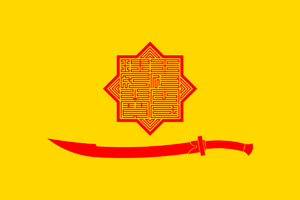
The Gugun Empire also known as the Gugun Khanate was the biggest nation (outside the united CRD) in the history of Canton River Delta. The empire stretched from the southern border with modern day Shimerland all the way to the present day city of Canton. The capital of the empire was Khoëmbali, the city is in the present the capital of the Kanar Autonomy. The empire started under Khan Khasar Sünsudyn, he expanded the small Gugun tribe into a medium size Khanate. His son, Daritai Sünsudyn expanded his fathers Khanate into a great empire. When he died the empire was at its largest expanse.
The empire slowly fell into disrepair under Khan Ozbeg Sünsudyn, the son of Daritai Sünsudyn. The most northern part of the empire declared independence as the united cities of Canton. With his dead the empire was split into 5 parts with all becoming separate khanates. In the northern part the Chao Khanate was formed that was more Huáng in culture then Kanar. In the middle the Khaidu Khanate was formed that shorty fell to their much stronger neigbours. In the south around Khoëmbali the Kanar Khanate was formed. And to the north and south of the Kanar Khanate the Bayar Khanate and Usun Khanate were formed.
Though the empire didn't last very long, it's legacy is still present to the modern times. The religion it brought with it to the north cause a schism in Dōuism that formed the northern and southern parts.
The Gunpowder empire
The Gunpowder empire better known as the Kanar Khanate was the greatest threat to Cantonese peace and safety between 1700-1800. It was a great nation with a strong military, though their economy wasn't that fair. The country was rapidly industrializing but to fuel their new industry they needed lots of natural resources like coal. This drove the country to conquer more territory. It also was the reason for the preservation of serfdom in Kanar.
Intergration into CRD
In 12 December 1967 the Kanar Khanate was incorporated into Canton River Delta under their own free will. The Khanate was no longer the great nation it was 100 years ago and it was slowly falling into disrepair. To stop this and give the nation a revival the only option was joining the far richer and better developed CRD.
History of United Canton River Delta
History of early modern Canton River Delta
Colonial Age
The history of Canton River Delta has known the concept of colonies and colonial empires. Namely, the colonies of Gadorien in western CRD and the colonies of Gueldere in the south-west.
Colonies of Gadorien
The nation wasn't fully united yet so the Gadori didn't attacked the CRD government but independent smaller nations.
The colonies of Gadorien were: Victoria, Hirental, Zuckerküste, Tsengkou, Horelmburg, Salzberg, Wilhelmshaven and Perlenküste.
Colonies of Gueldere
Gueldere also had colonies in Canton River Delta, but just like Gadorien. It didn't attack the CRD government but independent smaller nations.
The colonies of Gueldere were: Nieuw Zedeland, Johannesland and Dieper Punjab.
Nieuw Zedeland
Johannesland
Dieper Punjab
Decade of the two emperors
History of late modern Canton River Delta
End of the colonies
With the end of the colonial empires all around the world it was also the end of the Gadori Empire in Canton River Delta. The island and city of Victoria had to be given to CRD in 1996 as was said in a treaty signed by Gadorien.
Geography
Climate
Environment
Flora
Fauna
Canton River Delta is known for the many species that reside in the country, from Manatee's to elephants.
Politics and Government
Military
Land forces
TBA
Head of Imperial Navy of Canton River Delta is Miss Mitsue Okiku.
Aerial forces
TBA
Special forces
TBA
Elections
Elections are held:
First Chamber: Every 5 years
Second Chamber: Every 4 years
Regional and municipal: Every 3 years
Process of elections
No campaign time
Upper House (First Chamber of Canton (White Chamber))
Logo of the First Chamber
The First Chamber of Canton has 55 seats, which are distributed proportionally per votes. party can get 25 seats max, ensuring the need for coalition to control the parliament.
| Color | Name of the Political Party | Nick used by the Political Party | Political direction | Number of seats | Opposition/coalition/unaffiliated |
|---|---|---|---|---|---|
| Blue Lotus | Blue Left | Liberal left | 21 / 55
|
Coalition | |
| Xiong Party | The Pacifists | Liberal Center-left | 7 / 55
|
Coalition | |
| Green United | The Greens | Liberal left | 5 / 55
|
Coalition |
Lower House (Second Chamber of Canton (Yellow Chamer))
Logo of the Second Chamber
The Second Chamber of Canton has 1050 seats, which are distributed proportionally per votes.
| Color | Name of the Political Party | Nick used by the Political Party | Political direction | Number of seats | Opposition/coalition/unaffiliated |
|---|---|---|---|---|---|
| Blue Lotus | Blue Left | Liberal left | 427 / 1,050
|
Coalition | |
| Xiong Party | The Pacifists | Liberal Center-left | TBA | Coalition | |
| Green United | The Greens | Liberal left | TBA | Coalition | |
| SL | The Social-Libirals | Liberal left | TBA | Coalition | |
| D55 | The Democrats | Liberal Center-left | TBA | Coalition | |
| MI | The Industrialist | Liberal right | TBA | Unaffiliated | |
| PfD | The Dōuist | Center | TBA | Unaffiliated | |
| Cantonese Communist Party | Communists | Marxist far left | TBA | Opposition |
Daimshu's and Daimyo's
List of Daimshu's and Daimyo's
| Name of the Daimshu or Daimyo | Term | In office | Party | Note | Picture |
|---|---|---|---|---|---|
| Zhou Chun | 1st Term | 1872-1876 | Bushōmi | TBA | |
| 2nd Term | 1876-1880 | TBA | |||
| 3rd Term | 1884-1888 | TBA | |||
| Lang Xieren | 1st Term | 1872-1876 | TBA | ||
| 2nd Term | 1876-1880 | TBA | |||
| 3rd Term | 1884-1888 | TBA | |||
| 4th Term | 1892-1896 | TBA | |||
| 5nth Term | 1896-1900 | TBA | |||
| Yu Wei | 1st Term | 1900-1904 | Alliance of The Greens | TBA | |
| Long Tu | 1st Term | 1904-1908 | TBA | ||
| Yang Huang | 1st Term | 1908-1912 | TBA | 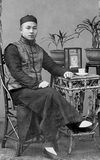
| |
| Sekino Thoki | 1st Term | 1912-1916 | Democratic Liberal Party | TBA | 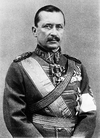
|
| Sada Arisa | 1st Term | 1916-1920 | TBA | 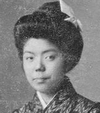
| |
| 2nd Term | 1920-1924 | TBA | |||
| Cao Minh Quân | 1st Term | 1924-1928 | Pan Canton Party | TBA | 
|
| 2nd Term | 1928-1932 | TBA | |||
| Daniel Přibyl | 1st Term | 1932-1936 | Labour Party | TBA | 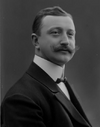
|
| 2nd Term | 1936-1940 | TBA | |||
| 3rd Term | 1940-1944 | TBA | |||
| Catharina Springborn | 1st Term | 1944-1948 | TBA | 
| |
| 2nd Term | 1948-1952 | TBA | |||
| Charanya Sunthorn | 1st Term | 1952-1956 | Liberal Democrats | TBA | 
|
| Friedrich Haas | 1st Term | 1956-1960 | Labour Party | TBA | 
|
| 2nd Term | 1960-1964 | TBA | |||
| Maximilian Schönfeld | 1st Term | 1964-1968 | Oversaw the intergration of Kanar into CRD as an autonomous area. | 
| |
| Chang He | 1st Term | 1968-1972 | Green United | TBA | 
|
| Zeng Xinya | 1st Term | 1972-1976 | D55 | TBA | 
|
| 2nd Term | 1976-1980 | TBA | |||
| Karina Klímková | 1st Term | 1980-1984 | Green United | Oversaw the intergration of Tôh Việt into CRD as an autonomous area. | 
|
| Tống Hữu Trác | 1st Term | 1984-1988 | TBA | 
| |
| 2nd Term | 1988-1992 | TBA | |||
| Luka Klinger | 1st Term | 1992-1996 | SL | TBA | 
|
| 2nd Term | 1996-2000 | TBA | |||
| Sasori Sawao | 1st Term | 2000-2004 | Xiong Party | TBA | 
|
| Amaya Nichiren | 1st Term | 2004-2008 | Blue Lotus | TBA | 
|
| 2nd Term | 2008-2012 | TBA | |||
| 3rd Term | 2012-2016 | TBA | |||
| Mei Wang | 1st Term | 2016-2020 | TBA | 
| |
| 2nd Term | 2020-2024 | TBA |
Current Daimshu
Mei Wang is the current Daimshu of Canton River Delta and the current head of the Blue Lotus Party. She is well known for her hard environmentalist actions and viewings. She is happily married to Ivana Kubátová and together they have 2 children. She is herself Bi and with that an activist for women's rights and LGBTQ+ rights in the world.
first Daimyo
Tian Zhou was the first Daimyo of Canton River Delta.
First Daimshu
Zhu Lin was the first Daimshu of Canton River Delta.
Foreign Relations
| Country/Union/Autonomous District | Status (Scale 1-10) |
Notes on relations | Mutual Embassies | Canonity |
|---|---|---|---|---|
| 10 | GGR is CRD closed ally. They are both in the Sekidean Union and work closely together in all sorts of ways. | Yes | Canon | |
| 9 | TBA | Yes | Canon | |
| 10 | TBA | Yes | Canon | |
| 9 | TBA | Only via SU consulates | Canon | |
| 7 | TBA | Only via SU consulates | Canon | |
| 6 | TBA | Only via SU consulates | Canon | |
| 9 | TBA | Only via SU consulates | Canon | |
| 9 | TBA | Only via SU consulates | Canon |
Domestic Relations
The relations between the national government and the Prefectures
| Prefecture | Status (Scale 1-10) |
Notes on relations | Prefectural Region |
|---|---|---|---|
| 10 | TBA | Canton Area | |
| 9 | TBA | Canton Area | |
| 9 | TBA | Canton Area | |
| 7 | TBA | Yuán Area | |
| 7 | TBA | Yuán Area | |
| 7 | TBA | Yuán Area |
Autonomous areas
Tôh Việt
The Tôh Việt Autonomy or as it is officially known as: The Kingdom of Tôh Việt, is located in the north of Canton River Delta. The Kingdom joined CRD in 5 September 1982 under then Daimshu Karina Klímková. The Kingdom joined CRD and thus becoming part of CRD and has to uphold Cantonese laws, but the Kingdom has their own Parliament, The Red Sun Parliament.
Kanar
The Kanar Autonomy or as it is officially known as: The Khanate of Kanar, is located in the south of Canton River Delta. The Khanate joined CRD in 12 december 1967 under then Daimyo Maximilian Schönfeld. The Khanate joined CRD and thus becoming part of CRD and has to uphold Cantonese laws, but the Khanate has their own Parliament, Great Parliament of the Khan.
Economy
Energy
Energy production in Canton River Delta (2021)
Industry
Infrastructure
Transport
Road transport
Public transport
Cycling
Cycling is quit a big way of transportation in Canton River Delta, mostly in the cities and the flat countryside.
Water transport
Air transport
Demographics
Education
schoolsystem of CRD
Education in Canton River Delta is separated in after elementary school in 3 groups categorized into difficulty.
Religion
Kaȝin Christianity
Kammism
Kammism is the second biggest religion in Canton River Delta.
Atheism
Atheism is the tirth biggest group in Canton River Delta.
Cantonese Catholic Christianity
Cantonese catholic Christianity has many similarities with normal catholic Christianity tough it has some differences. Cantonese catholic Christianity do think that there sould be a pope and that figures of saints and Jesus are okay. But in Cantonese catholic Christianity woman have always been equal to men and further more, Cantonese catholic Christians believe holy in the verse of Gospel of Matthew: "Thou shalt love the Lord thy God with all thy heart, and with all thy soul, and with all thy mind. This is the first and great commandment. And the second is like unto it, Thou shalt love thy neighbour as thyself" (22:37-39), Simply meaning God loves everyone and so sould you if you want to remain in his grace.
Protestant Christianity
Protestant Christianity mainly came via Gadorien into Canton River Delta but never really took roots outside of Friedrichländer and Victoria.
Dōuism
Dōuism is the biggest religion in Canton River Delta but the religion is split between northern and southern Dōuism. The two parts both look and act similar but have some major differences.
Hinduism
Hinduismis the fourth biggest religion in Canton River Delta.
Bujir Islam
Bujir Islam is an important religion in Canton River Delta and is the biggest religion in Kanar.
Other religions
Social hierarchy
The social hierarchy is still present in the modern day. The social hierarchy in Canton River Delta is divided into 7 groups.
First is the Inperiaru (インペリアル), the Inperiaru is the imperial class in CRD. Only the Kōgō or Ten'nō is part of this class, the rest of the imperial court is not part of the Inperiaru.
Second is the Seifu no naga (政府の長), the Seifu no naga is the class that is for the Daimshu or Daimyo.
Third is the Jōsō kaikyū (上層階級), the Jōsō kaikyū is the upper class of CRD with Governors, Samurai, Nobles and the super wealthy being part of it.
Fourth is the Gunji shirei-kan (軍事司令官), the Gunji shirei-kan is the class for Military commanders and other high ranking Military staff.
Fifth is the Takanaka (高中), the Takanaka is the high middle class of CRD with Businessmen and Soldiers being part of it.
Sixth is the Man'naka (真ん中), the Man'naka is the middle class of CRD.
Seventh is the Setchi (接地), the Setchi is the lower class of CRD.
The social hierarchy in Canton River Delta has effect also on the base of respect. The higher the person stands in the hierarchy, the more respect they get.
Family Structure
In the family structure of Canton River Delta is the mother the leading role of the family. The childern are expected to listen to both parents and the rules they set out for the household.
Organized Crime
Canton River Delta due to it's sheer size and dense population is known to organized crime.
The Red horde is the biggest of all the groups and it operates in the Kanar Autonomy.
Largest Cities
Largest cities or towns in Canton River Delta
TBA | |||||||||
|---|---|---|---|---|---|---|---|---|---|
| Rank | Prefecture | Pop. | |||||||
 Canton  Cxia |
1 | Canton | Greater Canton Metropolitan Area | 76,415,391 |  Edo  Huo Chéng | ||||
| 2 | Cxia | Cxia Area | TBA | ||||||
| 3 | Edo | Imperial Edo Area | TBA | ||||||
| 4 | Huo Chéng | Taigol Area | TBA | ||||||
| 5 | TBA | TBA | TBA | ||||||
| 6 | TBA | TBA | TBA | ||||||
| 7 | TBA | TBA | TBA | ||||||
| 8 | TBA | TBA | TBA | ||||||
| 9 | TBA | TBA | TBA | ||||||
| 10 | TBA | TBA | TBA | ||||||
Royalty and Nobility
Royalty
Sakuri
The imperial dynasty of Sakuri is the Oldest dynasty in all of Canton River Delta and the only Dynasty that ever ruled over the Teiyama region and CRD.
Đặng Hoài
| Name of the nhà vua or nữ hoàng | Rule | Coat of Arms | Picture / Painting | Crown | Note |
|---|---|---|---|---|---|
| nữ hoàng Thảo Đặng Hoài | TBA | 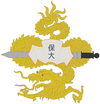
|
File:Thảo Đặng Hoài.png | TBA | TBA |
| nữ hoàng Mai Đặng Hoài | TBA | 
|
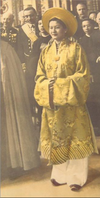
|
TBA | TBA |
| nữ hoàng Nam Đặng Hoài | TBA | 
|
File:Nam Đặng Hoài.png | TBA | TBA |
| Nhà vua Hoàng Đặng Hoài | TBA | 
|

|
TBA | TBA |
| Nhà vua Chien Đặng Hoài | 1996-still ruling | 
|
File:Nhà vua Chien Đặng Hoài.png | TBA | TBA |
Daichyn
| Name of the Khan or Khanum | Rule | Coat of Arms | Picture / Painting | Crown | Note |
|---|---|---|---|---|---|
| Khan Altan Daichyn | 1998-still ruling | 
|

|
TBA | TBA |
Crowns
Crown of the Empresses and emperors of CRD
Vehicles
Nobility
| Name of the Noble | Name of the House | Rule | Coat of Arms | Picture / Painting | Crown | Note |
|---|---|---|---|---|---|---|
| TBA | House of Arash | TBA | 
|
TBA | TBA | TBA |
| TBA | House of Rothanak | TBA | 
|
TBA | TBA | TBA |
Samurai
Canton River Delta is still known to Samurai. though the old function of military leader has been replaced by a more noble titel. Samurai are in the present still high in the social Hierarchy.
Culture
Music
Traditional music
Local music
modern music
Music in the modern age is mostly C-pop(Cantonese pop) and Western pop.
colonial music
In the region of Friedrichländer music is different from the rest of the country.
Literature, Philosophy and Art
Literature
Philosophy
Art
Tattoos
Tattoos in Canton River Delta can be separated into two different categories, Traditional- and Modern Tattoos. All these can be separated even further into regional tattoos.
Cuisine
Breakfast
lunch
Tea time
Dinner
Dessert
Special occasions
Sweets
Alcoholic drinks
Fashion
Fashion in Canton River Delta is very diverse. This is of course due to the many cultures that reside in CRD, but also due to foreign influences. Like the clothing that was worn in the court of Kōgō Maria Sakuri. Because of her western ideas she wore most of the time dresses that were made in Gadorien. This set off a trend in CRD of mixing western and eastern fashion into a new blend.
The Largest fahsion brands in Canton River Delta that are Cantonese are T&M and Vogūkō.
Court fashion
During the reign of Kōgō Maria Sakuri the western style of fashion Flourished, with almost all nobles and people in her court wearing the western style. It became common to have a western gown for a party and an eastern traditional gown for a ceremony. This gave rise to the Shu Fuku no sutairu (Two clothing styles) where thus people have two different kinds of wardrobes. This tradition of 2 different kinds of wardrobes is still common in Canton River Delta. But in the modern day the 2 different wardrobes are modern clothes and tradition clothes.
Military fashion
Even though it is weird to think about it, the military actually has given some influences on Cantonese fashion.
Clash of fashion cultures
In the west, suits were in almost every country known as male garments, but in Canton River Delta the opposite was true. When diplomats or rulers from the west came to CRD to present themselves to the government or imperial court, they were almost always men who were dressed in suits. The Cantonese interpreted that suits where something that the ruling class wore, and because women where the stereotypical rulers the majority of suits were worn by women.
Shogani
The idea of Shogani is the way of how love works in Canton River Delta. Due to the fact that Dōuism doesn't care about gender has as effect that the idea of love with gender based stereotypes is nonexistent. The way of Shogani is used where one person is the loving (愛する (Aisuru)) and the other is the beloved (愛されし者 (Aisare shi-sha)).
Famous Persons
| Name of Famous person | Born | Died | Age | Famous for | Most famous achievement | Note |
|---|---|---|---|---|---|---|
| Tobias Heidemann | 7-November-2000 | Still alive | 20 | singer | TBA | TBA |
| Liu Ya | 6-July-1996 | Still alive | 24 | Writer | TBA | TBA |
| Anne Mirza | TBA | TBA | 82 | Pirate | TBA | TBA |
Sports
Outdoor Sports
Horseback Riding
Horseback riding is a really big sport in CRD. The sport is the biggest in the autonomous region of Kanar and the Yǔyán region. The sport has multiple varieties, these are: normal horseback riding, horseback archery, jousting and dressage.
The Race of Bartan
The Race of Bartan is the biggest horse race in all if CRD. In the competition 120 competitors need to race with each other to finish first. The race is divided into stages, The first to finish a stage has a bonus the next day.
The length of the race is never the same. Some years it takes 8 days while other years it took 18 days.
Sailing
Archery
Football
Rugby
Skiing
Indoor Sports
Martial Arts
Judo
Karate
Taekwondo
Kung Fu
Sumo
Boxing
Boxing in Canton River Delta began as a street sport in the 1840s, mainly in the cities of Canton and Cxia, where foreign sailors were pitted against local fighters in the ring. The sport grew rapidly and unsupervised by the Cantonese government. Cantonese boxing style is similar to Western boxing style, with influences from traditional Cantonese martial arts.
The Canton Boxing League (CBL) is the nationwide organization that organize fights and competitions. The CBL is also the organization that organize the national boxing championship, the ICBC (Imperial Canton Boxing championship).
Holidays
| Holiday | Date | Location | Working day | Note |
|---|---|---|---|---|
| New Year's Day | 1 January | National | No | TBA |
| Valentine's Day | 14 February | National | Yes | TBA |
| Zexian Festival | 5 April | Local | Yes | TBA |
| Day of Uniting | 12 April | National | Yes | TBA |
| Hamaki | 15 April-19 April | Local | Yes | Hamaki is the Cantonese traditional custom of enjoying the transient beauty of flowers. |
| Labour Day | 1 May | National | No | TBA |
| Peace day | 18 June | National | No | On this day the people of CRD celebrate their ancestors for stopping their war traditions and embracing peace |
| Kōgō day | 11 July | National | No | The day where the people celebrate the birthday of their monarch. (date changes when there is a new monarch) |
| Nhà vua day | 8 September | Local | Partial (Only in Tôh Việt no working day) | The day where the people of Tôh Việt celebrate the birthday of their monarch. (date changes when there is a new monarch) |
| Khan day | 5 October | Local | Partial (Only in Kanar no working day) | The day where the people of Kanar celebrate the birthday of their monarch. (date changes when there is a new monarch) |
| Hashi To | 22 November | Local | no | Hashi To is the day of the dead in CRD. On this day the people will honour and celebrate their ancestors. |
| Sankt Nikolaus | 5 December | Local | Yes | Sankt Nikolaus is a tradition in the area of Friedrichländer and Canton. It is a tradition where Sankt Nikolaus goes on his horse on and gives children presents when they sleep. |
| Christmas | 25 & 26 December | National | no | Even though CRD isn't for the most part christian, Christmas is still widely celebrated. Christmas is in CRD more of a family holiday then a Christian one. |

